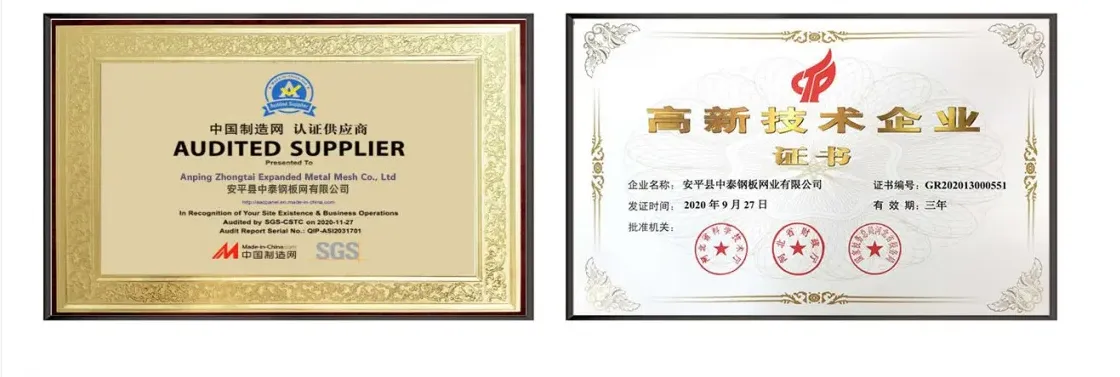Exploring Perforated Copper Foil Versatility and Applications
Perforated copper foil is a unique and versatile material that has found applications across various industries, thanks to its combination of physical and chemical properties. This innovative material is created by puncturing a thin sheet of copper with a series of holes, resulting in a grid-like structure that not only retains the material's inherent qualities but also enhances its functionality.
What Is Perforated Copper Foil?
Perforated copper foil begins as a standard copper foil, which is typically known for its excellent electrical and thermal conductivity, malleability, and resistance to corrosion. The perforation process involves using laser cutting or mechanical punching techniques to create holes in the copper sheet. The size, shape, and spacing of the holes can be customized based on specific application requirements. This perforation reduces the weight of the material while maintaining significant structural integrity.
Advantages of Perforated Copper Foil
The advantages of perforated copper foil over conventional solid copper sheets are numerous. Firstly, the reduction in weight makes it easier to handle and install, particularly in applications where material weight is a significant concern, such as in electronics and aerospace. Secondly, the perforations allow for improved airflow and heat dissipation, making it ideal for use in thermal management systems. The increased surface area provided by the perforations enhances the material's performance in heat exchange applications.
Moreover, perforated copper foil also boasts aesthetic appeal. The unique patterns created by the perforations can be utilized in decorative elements, such as architectural facades and interior design features. The play of light and shadow through the holes adds a dynamic visual element that can enhance the overall impact of a design.
Applications of Perforated Copper Foil
perforated copper foil

The applications of perforated copper foil are diverse and innovative. In electronics, for instance, it is widely used in the production of printed circuit boards (PCBs). The perforated design allows for effective heat dissipation in high-power applications, while still providing the necessary electrical connectivity between components. The lightweight nature of perforated copper foil also contributes to the overall reduction in weight and size of electronic devices.
In the automotive industry, perforated copper foil has been embraced for its effectiveness in EMI (Electromagnetic Interference) shielding. By integrating this material into vehicle designs, manufacturers can minimize electromagnetic interference, ensuring that electronic systems operate efficiently and are protected from external disturbances.
The architectural and design industries have also discovered the fascinating potential of perforated copper foil. Architects use this material for facade treatments and decorative partitions, exploiting its translucency and structural properties. The aesthetic quality of perforated copper can transform ordinary spaces into visually captivating environments.
Environmental Considerations
The use of perforated copper foil also aligns with modern sustainability practices. Copper is a highly recyclable material, and the perforation process generates minimal waste. Further, given its longevity and resistance to corrosion, products made from perforated copper foil tend to have extended lifespans, reducing the need for frequent replacements and contributing to lower environmental impact over time.
Conclusion
In conclusion, perforated copper foil is a remarkable material that exemplifies modern engineering and design. Its unique combination of lightweight, durability, and aesthetic appeal has led to its widespread use across various sectors, including electronics, automotive, and architecture. As industries continue to innovate and seek sustainable solutions, the role of perforated copper foil is likely to expand, paving the way for exciting developments and applications in the future. Whether enhancing the performance of electronic devices, providing aesthetic features in architecture, or contributing to environmental sustainability, perforated copper foil is truly a testament to the versatility and potential of modern materials.
-
Why Galvanized Trench Cover Steel Grating Resists Corrosion
NewsJul.10,2025
-
The Versatility and Strength of Stainless Expanded Metal Mesh
NewsJul.10,2025
-
Load Calculations in Steel Grating Platforms
NewsJul.10,2025
-
Keeping Pets and Kids Safe with Chicken Wire Deck Railing
NewsJul.10,2025
-
Hole Diameter and Pitch for Round Perforated Metal Sheets
NewsJul.10,2025
-
Aluminium Diamond Mesh in Modern Architecture
NewsJul.10,2025
Subscribe now!
Stay up to date with the latest on Fry Steeland industry news.

